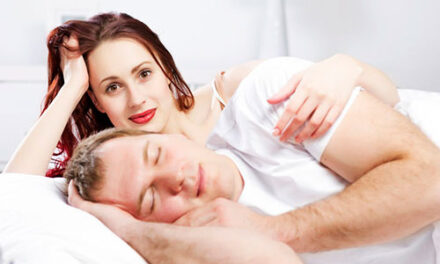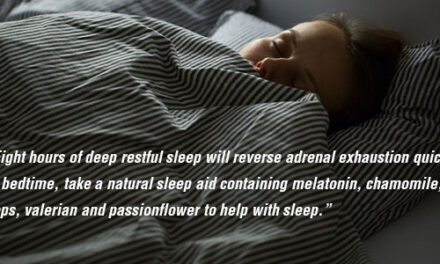Hormones play an integral role in the way we look, feel, and perform from day to day. The premiere sex hormone testosterone is important for men, but it also plays an important role for a woman-especially a woman’s healthy interest in sex.
Testosterone has been called the “hormone of desire” for good reason. Without enough testosterone, desire for sex all but disappears. Testosterone plays a major role in almost all aspects of sexual health in both genders (low testosterone levels are implicated in many cases of erectile dysfunction—not exactly something you ladies need to worry about). But testosterone is required for a lot more than just a good time.
Men produce testosterone mostly within their testicles with less then 5 percent produced in their adrenal glands, whereas women produce testosterone primarily from their ovaries (before menopause) and their adrenal glands. On average, women produce about one tenth the testosterone levels as men. Even though women produce a pinch of the amount a man produces, this hormone is still required for the same reasons:
- increased metabolism-more energy, less body fat
- increased lean body mass-especially muscle and bone
- healthy sexual function-libido
- healthy mind set-better moods
No more headaches
Studies have confirmed that testosterone is the primary hormonal message behind a woman’s (and man’s) sex drive. It is well accepted that most women after menopause experience a less than adequate sex drive, commonly referred to as female sexual dysfunction, or FSD. This condition can often be due to lowered testosterone levels-especially lower levels of free testosterone (the most biologically active testosterone). Most of your testosterone is bound to a special carrier protein called a sex hormone-binding globulin, or SHBG. It is only the “free” or unbound testosterone that can exert its wonders on your biochemistry.
Many doctors now prescribe testosterone treatment-along with other hormones (hormone replacement therapy or HRT, preferably as bioidentical hormones)-for women suffering from FSD, with great success. In fact, at least 20 percent of all testosterone prescriptions are written for women.
Swedish researchers recently published a study showing that testosterone gel given to postmenopausal women with low libido had positive effects on several aspects of sexual life such as frequency of sexual activity, orgasm, arousal, fantasies, and sexual interest.
Israeli researchers discovered that women suffering from loss of sexual desire may not have to consume testosterone on a regular basis in order to benefit from its powerful libido-enhancing effects. The study, which appeared in the Journal of Sexual Medicine in January 2007, showed that women who used a specially prepared testosterone gel experienced increased genital sensations and sexual lust three to four hours afterward. The researchers concluded that this may be a safer way to administer testosterone in women suffering from chronic low libido.
Raising testosterone levels the natural way
Now that you are a little more in touch with the importance of maintaining healthy testosterone levels through age, following are a few more testosterone tips for women:
- Exercise-especially weight-bearing exercise. Regular exercise has been documented to increase free testosterone and maintain lean body mass.
- Lose the fat-excess body fat may interfere with healthy testosterone levels.
- Reduce stress-stress enhances the hormone cortisol, which reduces testosterone.
- Try supplementing with a Southeast Asian herb called tongkat ali (Eurycoma longifolia). The Asian Congress of Sexology published a paper in 2002 touting the incredible aphrodisiac and testosterone-boosting powers of this amazing herb.
A healthy sex life is indicative of good health. The good news is that you now know it is possible to maintain a healthy supply of testosterone at any age.
Burning fat with testosterone
A major frustration for women is that most men can control their weight more easily and can even lose more weight when following the same weight loss program. A large part of this metabolic advantage can be found in the extra 30 to 40 pounds of muscle a man’s body carries. This extra muscle helps men burn up to 30 percent more calories than women-exercising or sleeping-and it can be attributed largely to the extra testosterone a man produces.
References
- Travison TG, et al. The relationship between libido and testosterone levels in aging men. J Clin Endocrinol Metab. 2006 Jul;91(7):2509-13. Epub 2006 May 2.
- Guay AT, Jacobson J. Decreased free testosterone and dehydroepiandrosterone-sulfate (DHEA-S) levels in women with decreased libido. J Sex Marital Ther. 2002;28 Suppl 1:129-42.
- Nathorst-Boos J, et al. Treatment with percutanous testosterone gel in postmenopausal women with decreased libido–effects on sexuality and psychological general well-being. Maturitas. 2006 Jan 10;53(1):11-8.
- Chudakov B, et al. Transdermal testosterone gel prn application for hypoactive sexual desire disorder in premenopausal women: a controlled pilot study of the effects on the Arizona sexual experiences scale for females and sexual function questionnaire. J Sex Med. 2007 Jan;4(1):204-8.
- Vogel RB, et al. Increase of free and total testosterone during submaximal exercise in normal males. Med Sci Sports Exerc. 1985 Feb;17(1):119-23.











